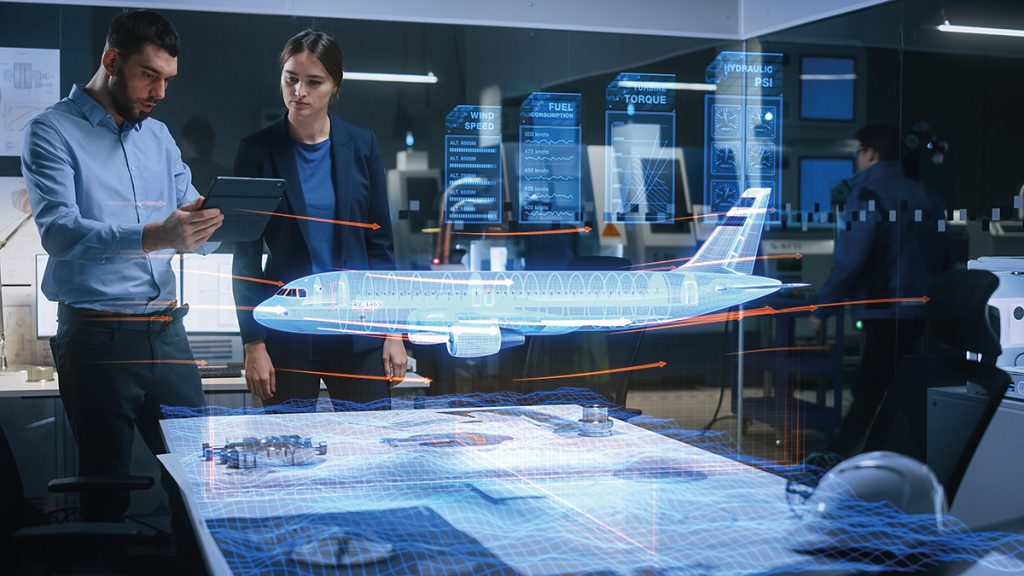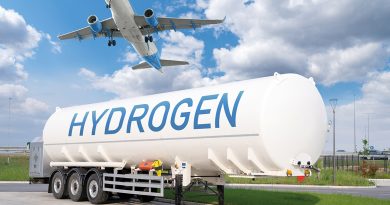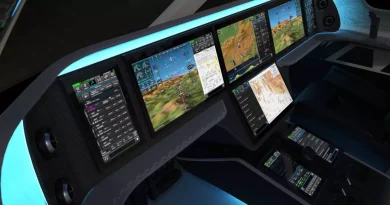Trends in Real-Time Simulation and Validation Testing: An Aerospace Innovations Roundtable
Real-time simulation and validation testing is an effective way for the aerospace industry to test aviation systems and diagnose potential problems in the digital realm, before committing resources to build actual equipment in the physical world
Two of the leading companies in the real-time simulation and validation testing sector are dSPACE and RTI. In this exclusive Aerospace Innovations Roundtable, top experts from both companies will reveal the advances, market trends, and customer requirements that are driving this sector. Francisco J. Flores Sanchez is the Business Development Manager for dSPACE Aerospace & Defense. John Breitenbach is RTI’s Director of Aerospace and Defense Markets
Aerospace Innovations: To begin, what is new in real-time simulation and validation testing for aerospace?
Francisco J. Flores Sanchez: As the aviation market continues the path to introducing alternate fuels and harnessing electrical power, their need to test these concepts becomes crucial as they seek to move through a path to certification. dSPACE has been at the forefront of aiding the automotive industry in the same endeavor; thus, is in a unique position to take on this task with current and upcoming aircraft companies.
Our battery management testing solutions allow these companies to simulate the behavior of battery cells to meet the strict requirements to operate within the acceptable safety margins of aircraft operations. dSPACE Power HIL solutions provide real power to facilitate inverter development by emulating motors and batteries during hardware in the loop testing. Our Power HILs provide the flexibility of testing advanced failure scenarios not feasible with a real motor to meet the wide range of strict requirements needed to ensure their safe operations.
John Breitenbach: In aviation, real-time simulation and validation testing are advancing quickly, with a strong push for digital twins, model-based engineering, and new capabilities in simulation software. These tools help developers and operators create realistic virtual models of aviation systems, making it easier to test performance limits and predict outcomes with greater accuracy.
There’s a rising demand for training on real systems, where using real-world data has become a critical requirement. The more realistic the training environment, the better operators retain and apply what they’ve learned. Training within the actual system and incorporating real data into simulations builds confidence and prepares operators to perform effectively when it matters most. At the same time, there’s a strong push for simulations that support multi-domain operations as the prevalence of these systems on the battlefield rises, showing how manned and unmanned systems work together in complex environments will be evermore critical.
Furthermore, the drive to develop superior systems faster has led to innovations in testing, where decoupled systems are tested together. This approach has proven effective in accelerating deployment. Altogether, these advancements are not only speeding up system development and certification — essential for next-generation aviation technologies — but are also transforming training by providing personnel with hands-on, data-driven experiences that build readiness more effectively.
At RTI, we’re directly addressing these industry priorities with RTI Connext®. Our solution is built to support faster development cycles, enabling operators to train with real data, in real-time, for real-world results.
Our high-performance data distribution service supports complex aviation simulations by delivering reliable, low-latency data, enhancing real-time situational awareness and speeding up decision-making and validation testing. Connext seamlessly integrates diverse systems, with modular configurations that adapt to the latest technologies in aviation. We’re also enhancing safety-critical applications with RTI Connext TSS (Trusted Systems Solution), which provides real-time, reliable data connectivity that complies with a path to DO-178C certification. Built for interoperability, Connext TSS gives aerospace engineers a powerful framework for testing in realistic simulations, allowing both development and training efforts to meet the highest standards of reliability and performance.
Aerospace Innovations: What other trends in real-time simulation and validation testing are driving the marketplace?
John Breitenbach: Apart from the ones mentioned above, we’re seeing shifts in areas like AI and machine learning integration, cross-domain interoperability, and the growing demand for digital twins. AI-driven simulations are expediting testing cycles by predicting potential faults or anomalies, while machine learning enhances simulation adaptability, creating dynamic scenarios that better reflect real-world complexities earlier in the development.
Cross-domain interoperability is also a critical focus as the industry advances towards interconnected systems, where real-time, secure interoperability is essential. For example, Connext TSS’s standards-based framework enables seamless communication across diverse systems, supporting today’s distributed simulation environments and the broader shift towards a “mosaic” approach.
Additionally, digital twins continue to gain traction as they offer high-fidelity, real-time models that support comprehensive testing and validation, allowing developers to simulate real-world conditions more accurately and speed up development cycles.
Francisco J. Flores Sanchez: One of the most noticeable trends is the increase in scaled Software in the Loop Simulation utilizing cloud computing. The addition of this capability allows for the expansion of team collaboration, even when working in different geographical locations.
Cloud computing allows these teams to increase the number of resources that can be applied to the validation process. In traditional validation methods, test cases run sequentially on one single platform whereas the cloud allows parallel jobs to run at the same time, achieving further test coverage in shorter periods of time.
Another trend we are seeing is the increase in use of automated testing frameworks with the inclusion of continuous integration and continuous deployment pipelines; these allow engineers to reduce human error and achieve faster testing cycles.
Aerospace Innovations: What do customers want most from real-time simulation and validation testing, and how are you giving it to them? What are the benefits?
Francisco J. Flores Sanchez: Customers want to find issues early in their development cycle. Real-time simulation and validation systems provide customers with the means to test and validate their implementations against their requirements early on.
dSPACE provides solutions along all development stages to help our customers meet their goals. MIL testing allows customers to test their model implementation during function development. SIL testing provides customers with the ability to perform functional testing based on virtualized ECUs at a higher integration level. And lastly, we provide HIL testing in which the expected final hardware is then put under test to validate its performance against the validated system models and software.
John Breitenbach: Customers are looking for real-time simulation and validation testing that delivers high accuracy, reliability, and a clear path to safety certification, with the flexibility to grow as their needs evolve. They want solutions that seamlessly integrate real-world data and work across both legacy and new systems, helping them make the most of current investments while staying ready for the future.
RTI Connext TSS is built for exactly this — providing a modular, safety-certified framework that enables real-time, high-performance data exchange, making simulations feel as close to real operations as possible. The benefits of Connext TSS include reduced testing costs, path to safety certification, improved system safety, and minimized risk. With its scalable and adaptable data connectivity, RTI Connext offers a robust, future-proof solution that accelerates system development, testing, and validation, even in complex and dynamic environments.
Aerospace Innovations: What are the challenges in the real-time simulation and validation testing today, and how are they being overcome?
John Breitenbach: One of the main challenges in simulation today is finding the right balance between meeting strict regulatory requirements and achieving high performance, especially as environments get more complex. Safety-critical standards are demanding, and meeting them without slowing down development can be tricky. Data-centric, standards-compliant frameworks are helping simplify the certification process, making it faster and more manageable.
Another common challenge is integrating legacy and next-generation systems, which often vary widely in setup and capabilities but need to work together for a truly effective solution. Open, standards-based interoperability is helping to bridge these differences, allowing diverse systems to communicate seamlessly. Additionally, scalable architectures and cloud technology enable aviation companies to manage massive datasets more efficiently, reducing bottlenecks and making it easier to meet the demands of advanced, safety-certified simulations.
Francisco J. Flores Sanchez: Final testing during the certification process remains a very expensive and time consuming task. Customers can reduce the amount of time they spend during acceptance testing if they can run their test cycles with a high level of software quality.
Simulation and validation in combination with automated testing processes help improve the software quality by finding implementation errors in early development stages. This increased software quality leads to reduced efforts to move a product through acceptance/final testing for certification.
Aerospace Innovations: Finally, what new products in real-time simulation and validation testing are on the horizon, and how will they benefit the aerospace industry?
John Breitenbach: Emerging products like Connext TSS are advancing simulation fidelity and modularity, enabling flexible, scalable testing environments that adapt to rapid technological advancements. Connext TSS supports traditional aviation as well as future applications, including Urban Air Mobility (UAM) and autonomous and hybrid electric aircraft. This modular, safety-certified platform allows aerospace companies to test and validate complex systems in controlled environments, accelerating innovation cycles and enhancing safety across evolving aerospace technologies — from drones to next-gen passenger aircraft.
Francisco J. Flores Sanchez: dSPACE is investing heavily in our software solutions to allow users to test, validate and verify software models and code within both MIL/SIL applications which provide a window to see deviations from requirements during the early stages of development. To add to this capability, we have also investments in scaling up Simulations via Cloud simulations, thus allowing for large scale simulation in the cloud utilizing the same models as deployed on a real time HIL system, to improve confidence in the systems being developed and tested, identifying edge and corner cases that need to be further scrutinized and improved as necessary to deliver a robust and reliable system.
The immediate benefit to the aerospace industry is the ability to test and validate requirements during the early stages of requirements conceptualization. This may translate in less hours spent at later stages, where correcting errors while utilizing real components becomes more expensive and time consuming.
By James Careless




